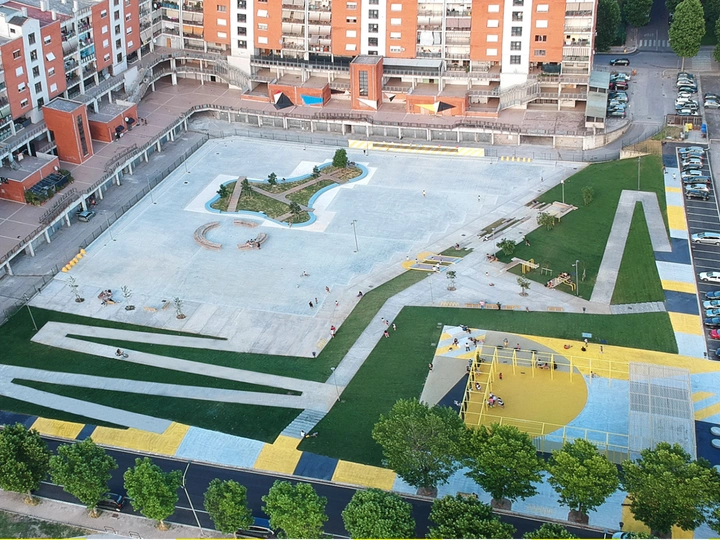Ludic Cities

Francesco Caneschi (1990) was born in Firenze (IT). He's an urban practitioner that works across public space, art and research. His PhD project is an action-research, and it is titled: “Glocal Tools. Temporary urban actions for the collective production of space”.
He is author and co-author of many publications, many of which are gathered in the "theory" section of the website www.francescocaneschi.com
He wrote several articles and participated in several international conferences about public space in the following fields: temporary urban regeneration, the social fabric in historic-touristic cities and urban commons.
He believes that theory is a set of tools to be used in practice, and that their union is celebrated through communication.
In 2021 he wrote the book titled "Tactical Urbanism and DIY architecture for a gentle urban revolution". This book is the English updated version of his Portuguese Master Thesis that, since 2018, has been downloaded more than five hundred times.
He’s the curator of the archive of Titti Maschietto, co-founder of the radical architecture group UFO.
He participated in various workshops by Orizzontale, in the beginning as a participant and later as a researcher and assistant. Orizzontale (IT), Meanwhile Spaces (UK) and the NYC Plaza Program (USA) are the three case studies of his PhD project.
In 2020 he was an Arquia Foundation Fellow, with a paid internship at Aires Mateus Associados in Lisbon. In 2019 he participated, as a researcher selected by the Rectorate of the University of Aveiro (UA), in the Tactical Master Plan of the UA Campus. He obtained his Master Degree in Architecture at FAUP in Porto (PT).
Recently, he has been selected for the incubation program Social Tides Aspire Italy, and he has won the program Smart & Coop, organized by Impact Hub Florence and CR Firenze Foundation.
His research interests: radical architecture and incremental urbanism.
«[...] if cities are not meant for children, they are not meant for citizen either. If they are not meant for citizen - ourselves - they are not cities. If society today is not able or willing to build cities for citizen (for children), on what grounds do we deem it a society?»
This quote by Aldo Van Eyck (Lefaivre, 2002) exemplifies this editorial proposal: playfulness (Huizinga, 1973) and good urbanity (Lefebvre, 1996) are two concepts that work in a reciprocal way. One of the first examples of this link are the Van Eyck playgrounds in Amsterdam.
This approach is now spread all across the world, but especially in Europe. The more recent interventions such as Este No Es Un Solar in Saragoza (2007) or Prossima Apertura in Aprilia (2021), aim to re-define urban spaces with the inclusion of playful suggestions, whether they are drawings on the ground or real devices designed to play. In the last ten years, asphalt art projects and playscapes became mainstream, but a comprehensive publication is still missing.
The good urbanity described by Lefebvre is made of collective moments of spontaneous celebration, with the prevalence of use value over exchange value. The Covid Pandemic underlined once more the importance of playscapes (Iacovoni, 2009) in the urban dimension.
The methodology will consist in a systematization of the fundamental concepts, already elaborated by the author, and in a collection of case studies, drawn up in three categories: temporary interventions, asphalt art and playscapes.
The systematization of case studies is aimed at offering a toolbox useful for both designers and administrators while the general public will be intrigued by a collection of top view photographs of the interventions. These pictures will work as “blueprints” for professionals.
“Ludic Cities: Playscapes and Urban Regeneration” wants to be the first publication of its kind that links two topics united by decades of history, showing their complexity and potential.